10
-
- Sequential logic (Part 1)

- ● Introduction
● Bistables
● Asynchronous inputs
● Race hazards
● Master-slave flip-flop
● Counters
● Monostables
● Astables
● Memory registers
● Shift registers
-
- Counters
- Watch the Video 📹
● Ripple counters
– can be constructed using several forms of bistable
– consider the following arrangement
– with J = K = 1 each bistable toggles on the falling edge of its clock input


● Each stage toggles at half the frequency of the previous one
–acts as a frequency divider
–divides frequency by 2n (where n is the number of stages)
● A design example - see Example 25.4 in course text
Clock generator for a digital watch
–15-stage counter divides signal from a crystal oscillator by 32,768 to produce a 1 Hz signal to drive stepper motor or digital display

● Consider the pattern on the outputs of the counter shown earlier
– displayed below
● the outputs count in binary from 0 to 2n−1 and then repeat
–the circuit acts as a modulo-2n counter
–since the counting process propagates from one bistable to the next this is called a ripple counter
–circuit shown is a 4-bit or modulo-16 (or mod-16) ripple counter

● Modulo-N counters
–by using an appropriate number of stages the earlier counter can count modulo any power of 2
–to count to any other base we add reset circuitry
–e.g. the modulo-10 or decade counter shown here

● Waveform diagram for the decade counter

● A ripple down counters

● The output sequence of the ripple-down counter

● An up/down counter

-
- Review of Ripple Counters
- ● Ripple counters are just a CHAIN OF TOGGLE FLIP-FLOPS



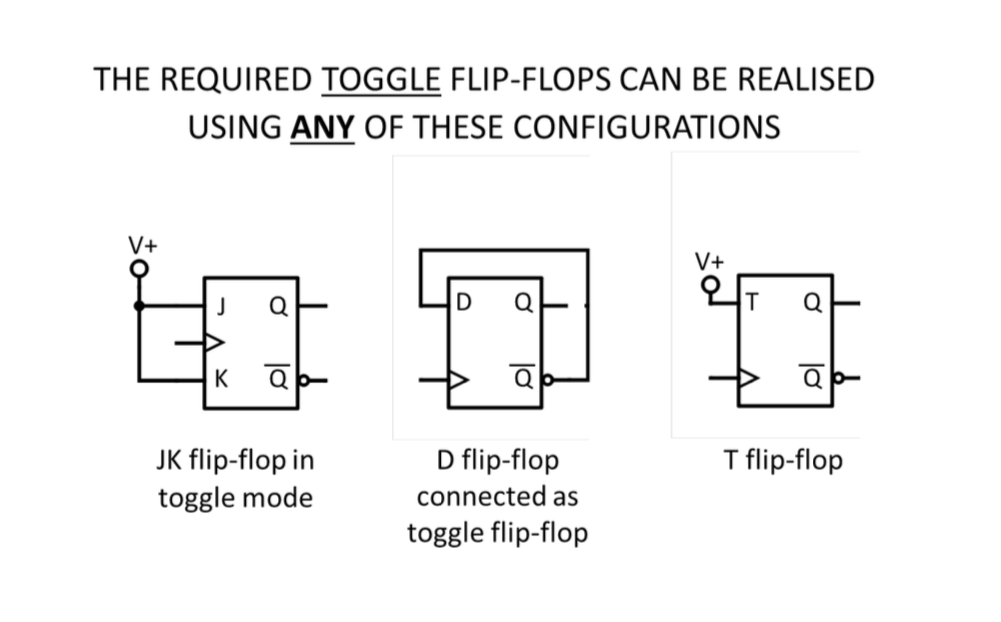
Ripple up-counter using D flip-flops
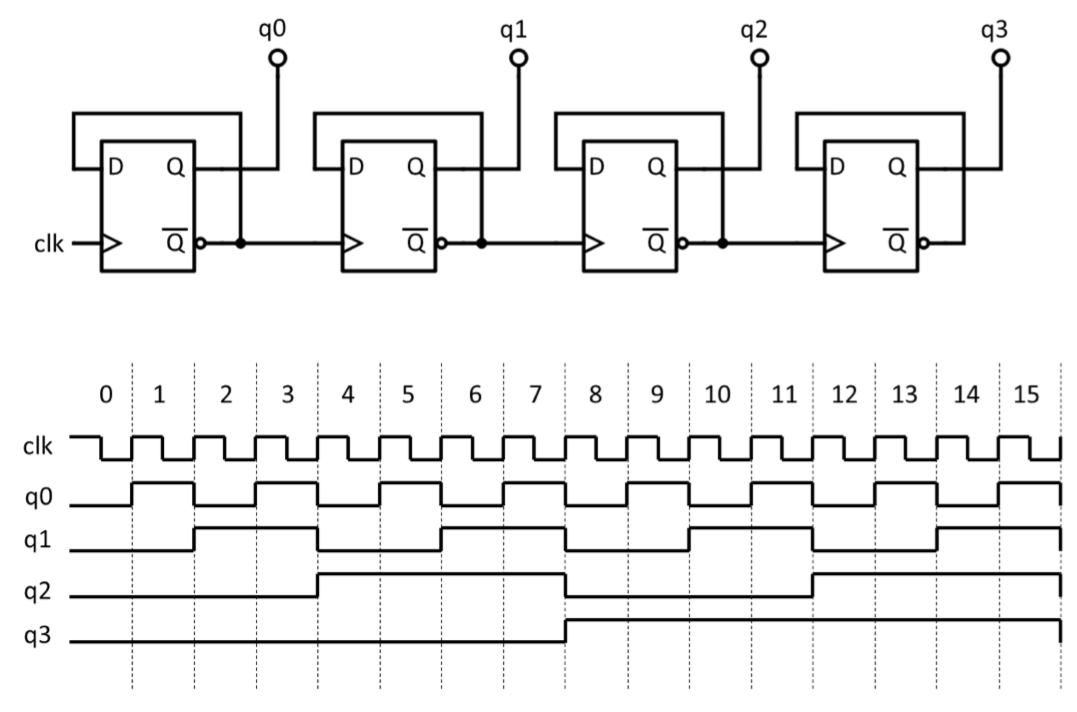
● Propagation delay in ripple counters
– while ripple counters are very simple they suffer from problems at high speed
– since the output of one flip-flop is triggered by the change of the previous device, delays produced by each flip-flop are summed along the chain
– the time for a single device to respond is termed its propagation delay time tPD
– an n-bit counter will take n x tPD to respond
– if read before this time the result will be garbled
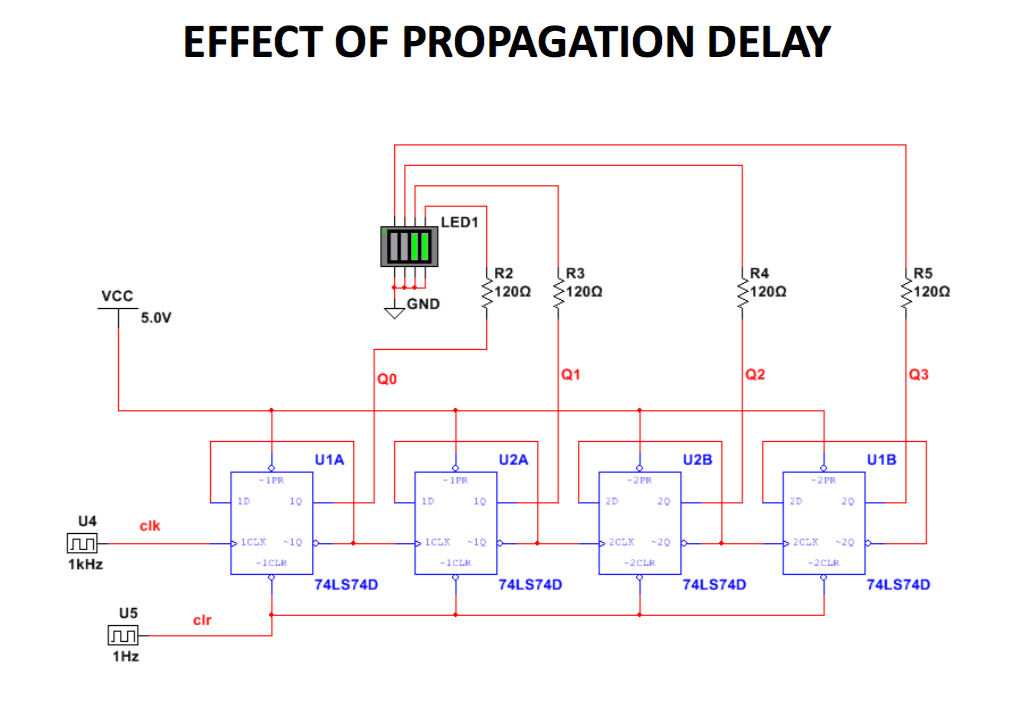
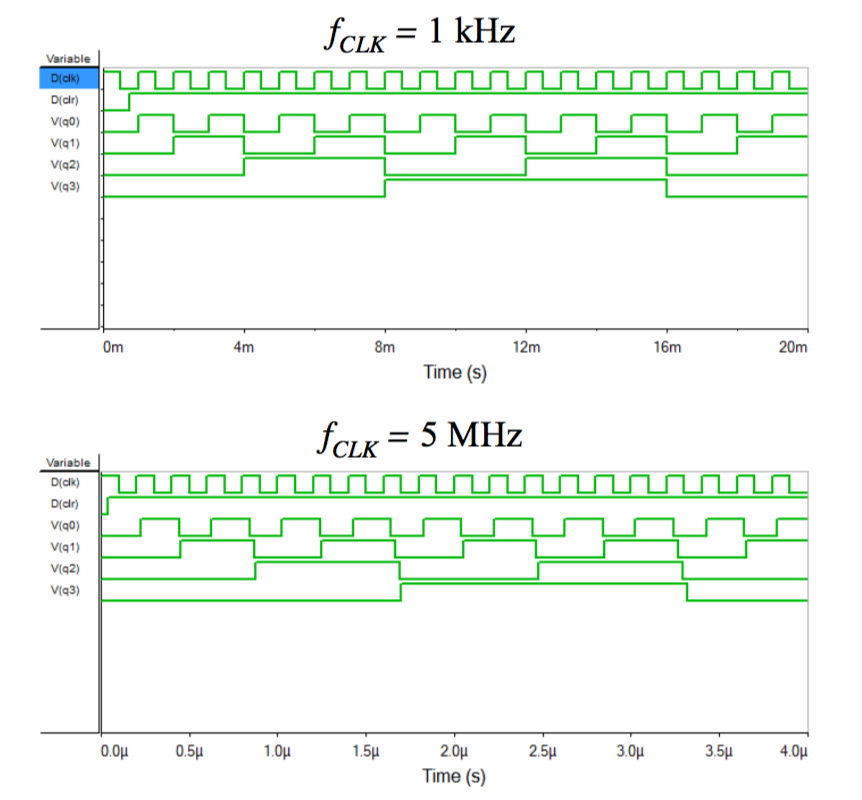
● Synchronous counters
– these overcome the propagation delay in ripple counters by connecting all the flip-flops to the same clock signal
– thus each stage changes state at the same time
– additional circuitry is used to determine which stages change state on each clock pulse
– faster than ripple counters but more complex
– available in many forms including up, down, up/down and modulo-N counters
● A synchronous four-stage counter
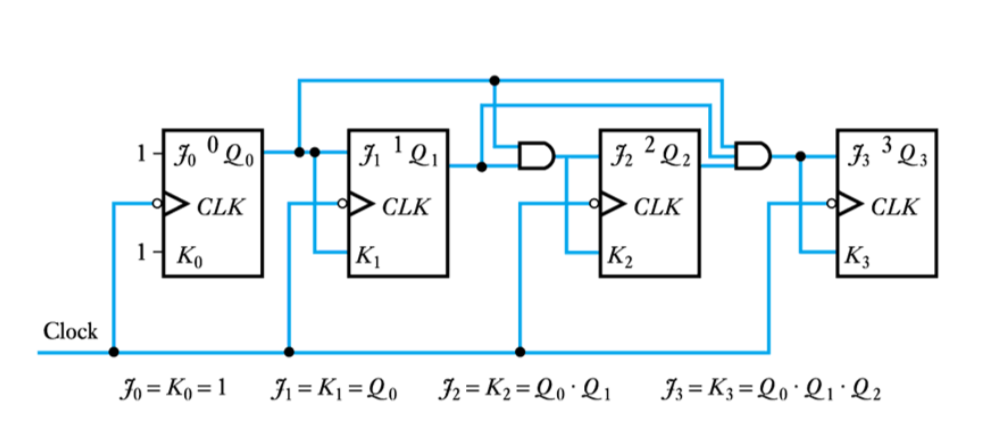
● A cascadable 4-bit synchronous counter
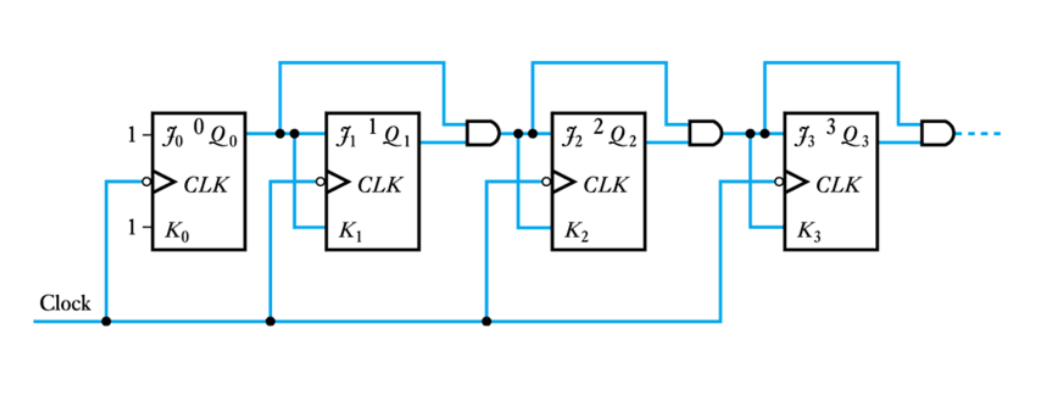
● Integrated circuit counters
– while we can build counters from flip-flops, we more often use dedicated ICs
– these are available in numerous forms, such as binary, decade, BCD, up, down and up/down
– they are normally designed to simplify cascading

-
- Monostables or one-shots
- ● Monostables are another form of multivibrator
– while bistables have two stable output states
– monostables have one stable & one metastable states ●when in its stable state Q = 0
• when an appropriate signal is applied to the trigger input (T ) the circuit enters its metastable state with Q = 1
• after a set period of time (determined by circuit components) it reverts to its stable state
• it is therefore a pulse generator
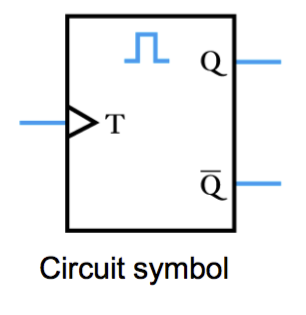
● A simple monostable
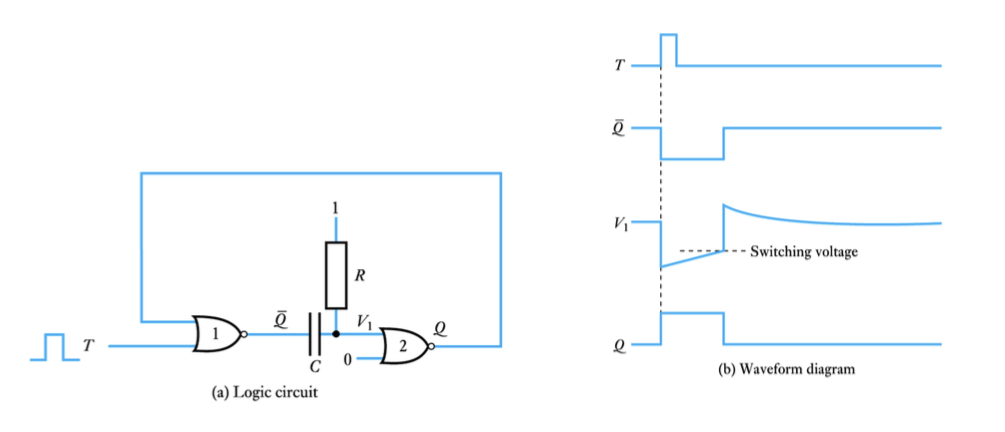
● Monostables can be retriggerable or non-retriggerable
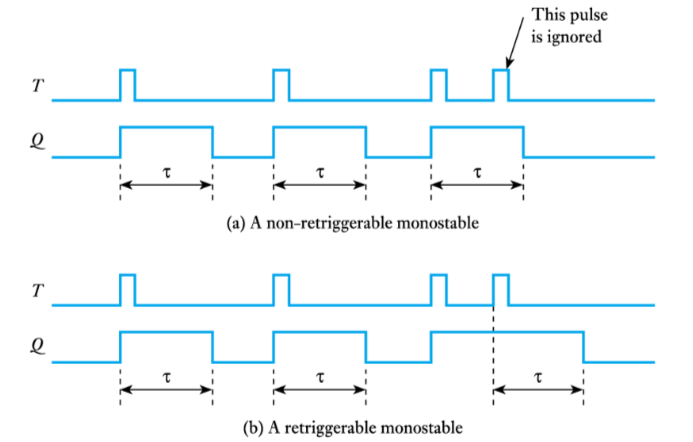
-
- Astables
● The last member of the multivibrator family is the astable
–this has two metastable states
–has the function of a digital oscillator
–circuit spends a fixed period in each state (determined by circuit components)
–if the period in each state is set to be equal, this will produce a square waveform
● A simple astable arrangement
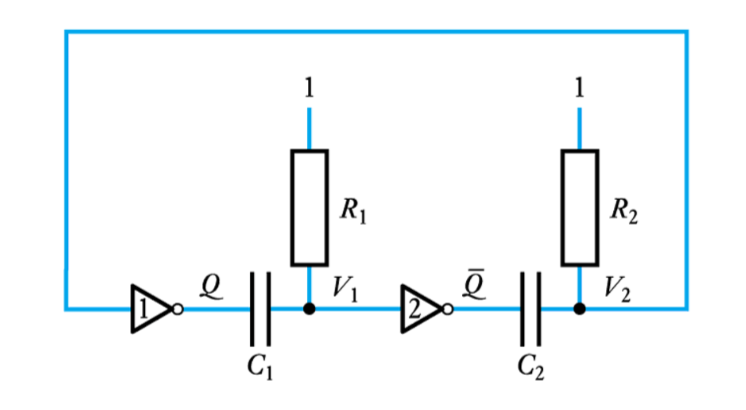
● Waveforms of the simple astable circuit
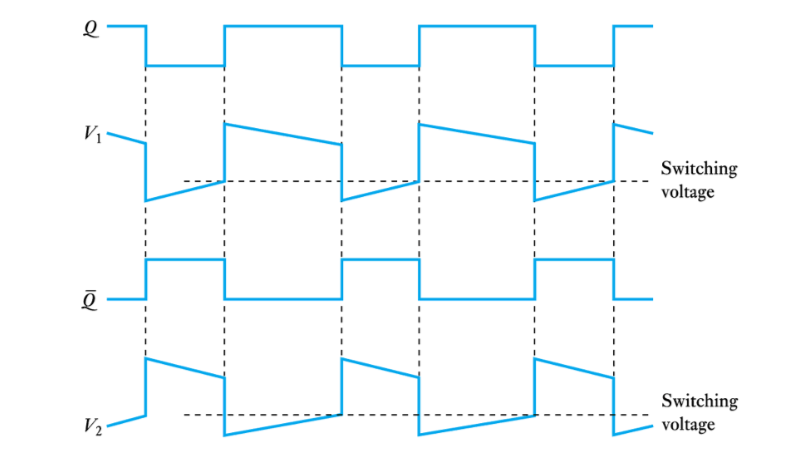
● An astable formed by two monostables

-
- Memory Registers
- ● Combining a number of bistables we can construct a memory register
–several forms of bistable can be used, for example:
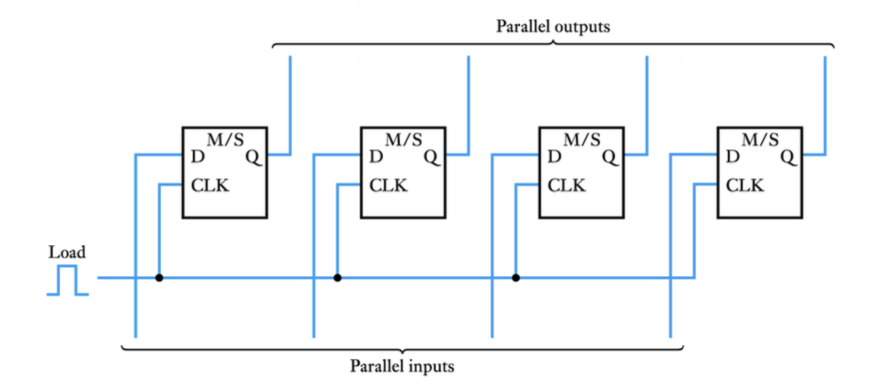
● Often we are not concerned with the internal construction of the register
–they are a standard integrated component

-
- Shift Registers
Watch the Video 📹
- ● The operation of a shift register
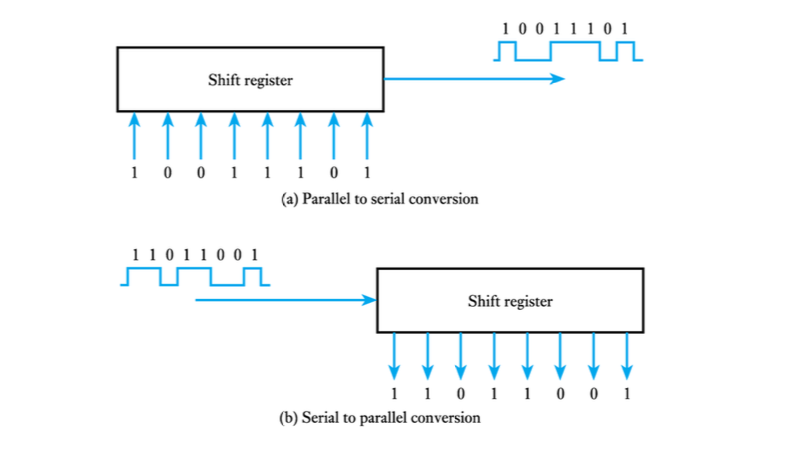
- Shift Registers: A Chain of D Flip-Flops

● A 4-bit parallel load shift register

● A design example - see Example 25.3 in course text Application of a shift register
Application of a shift register
–shift registers are widely used in communications systems
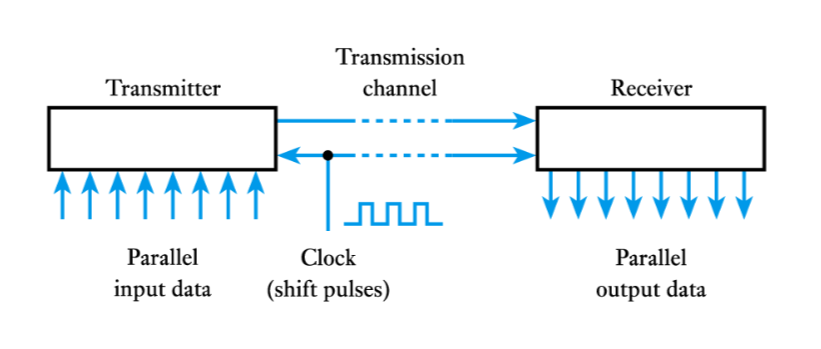
-
- Key points
- ● Registers form the basis of various memories
● Counters are widely used in a range of applications
● Monostables and astables perform a range of functions -
-